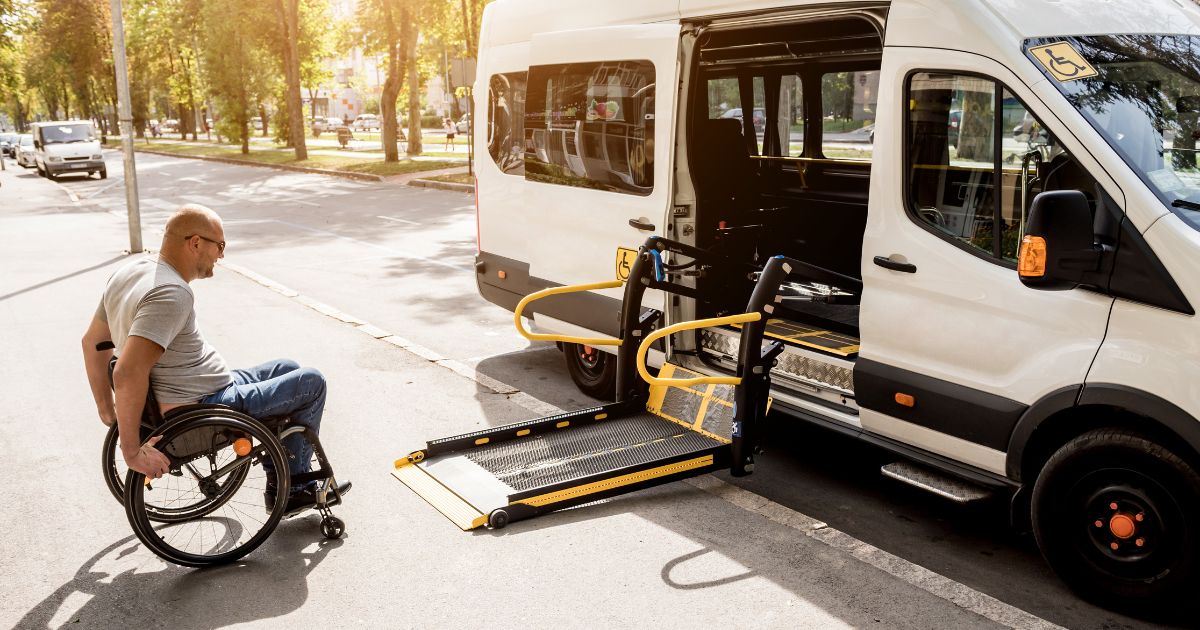
Transportation serves as the foundation for community success. Our transportation systems allow residents to access amenities and businesses, commute to work or school and more. In order to forge these community connections, however, transportation providers must continue to prioritize closing gaps that currently impact millions of Americans — whether they cannot afford a car or regularly use personal rideshare services, do not live in close proximity to a bus station or have physical disabilities that make it difficult to use public transit options.
Luckily, the $1.2 trillion infrastructure package includes funding and policies to rebuild and revive this important foundation of our communities, providing the transit industry with opportunities to bridge accessibility and equity gaps.
The goal of creating equitable transportation services must be at the core of new transit tech innovations. Transit providers must leverage technology to ensure everyone has access to quality mobility options regardless of socioeconomic status, physical ability, location or demographic. The first step toward improving transit equity starts with identifying the communities that face unique transportation challenges and developing new services that support their needs.
Supporting Under-Resourced Communities With Accessible Mobility
Many regions and neighborhoods across the U.S. are not equipped with nearby bus stations, and ridesharing may not be an affordable option — issues that can disproportionately impact rural and marginalized communities. In fact, a staggering 45% of Americans do not have access to public transportation, and 9% of households do not own a car. These transportation limitations are not just a headache, but they severely limit people’s ability to find and keep jobs or access critical amenities like doctor’s appointments or the grocery store. Transit providers have a unique opportunity to optimize their systems and bridge both affordability and accessibility gaps.
Transportation leaders must consider expanding their services to reach residents in under-resourced areas who may live outside central downtown or city hubs. This includes partnering with tech providers and city leaders to identify geographic parameters in need of new or altered routes that reach riders in suburban or rural areas.
In addition to expanded service, transit agencies should take advantage of innovative micromobility technology to reach a broader, diverse set of riders. Technologies such as e-bikes and e-scooters not only serve as an efficient means of transportation that extend to areas where bus stops may not be present, but they can also serve as a quick fix to close gaps in current transit systems. Our recent research report found that 58% of U.S. transit riders primarily use private transportation (personal vehicle or rideshare) because the bus or subway is too far from their home. Unfortunately for residents in under-resourced areas, this is not always a realistic option, and micromobility can help fill the gaps in commuting to a transit stop.
The average American spends roughly 13% of their household expenditure on transportation, which disproportionately impacts lower-income groups. Micromobility can help lower some of these costs, but transit providers are considering other ways to tackle affordability gaps. This includes the argument for free public transportation services, which Boston’s new mayor addressed in her first day in office by launching a two-year pilot to remove fares on certain bus lines.
Creating Transit Experiences That Support Those With Disabilities
As the transportation industry takes strides to break down accessibility barriers, every population of riders must be considered. More than 25 million Americans live with a travel-limiting disability and frequently rely on paratransit services. Therefore, it’s essential that today’s transportation systems expand services to better support aging populations or those with physical disabilities.
Innovative transit technology can ensure those with physical disabilities have equal access to mobility — from riding the subway to accessing rideshare services. However, there first must be efficient, convenient transit options in place, including on-demand capabilities and wheelchair-accessible vehicles, as well as enhanced mobile apps and signage. For example, transit systems and technology providers must ensure their applications and signs meet WCAG compliance (a tool that unifies web accessibility standards) and cater to all.
We’ve recently seen an uptick in transit agencies launching programs and allocating funding to improve accessibility for riders with disabilities, such as the New York Metropolitan Transportation Authority’s “Access-A-Ride” paratransit service and real-time data tracking to monitor station elevator and escalator outages. Looking at the future of innovation, transportation and city leaders must also have a hand in identifying opportunities to revamp overall city design and allow freedom of movement for everyone. This includes raised crosswalks to slow traffic, visual displays or vocalized announcements for people who are deaf or hard of hearing.
Getting Started Addressing Transit Inequities
How can transit systems get started on programs to address accessibility gaps? An important first step is listening to their communities, including current and prospective riders, to understand pain points and needed upgrades. Transit agencies can do this by launching short online surveys via their mobile apps or websites with questions to identify the biggest service gaps. Additionally, agencies should have dedicated staff enter the communities they serve to poll residents that lack public transportation access. By forging direct connections with these community members, transit agencies can gain a firsthand perspective from those in underserved areas and use these insights to develop an expansion strategy that best meets community needs.
Data collection is only the first step. Before deploying system upgrades or new programs, transit agencies must identify tech partners that can allow them to experiment with deployments through simulation tools. This testing software can help predict costs, map out possible scenarios, prepare for unexpected change and anticipate rider behavior. This can allow transit agencies to become more nimble and truly optimize services for their community.
Innovation in 2022 — in the transportation realm as well as every other industry — must remain focused on creating equitable experiences. By bridging gaps in our communities and investing in broadening accessibility, we can create communities that are more supportive of people from all walks of life and allow more people to reach upward mobility.